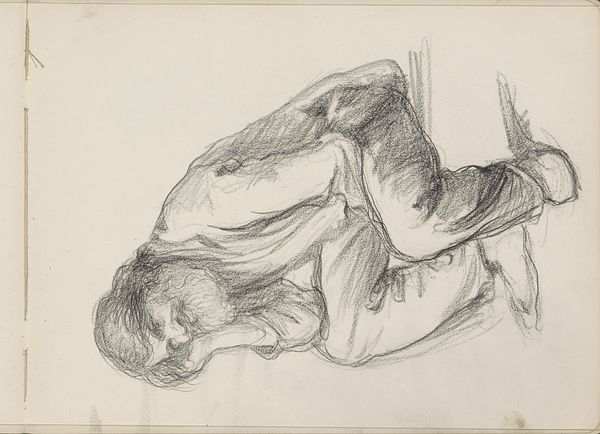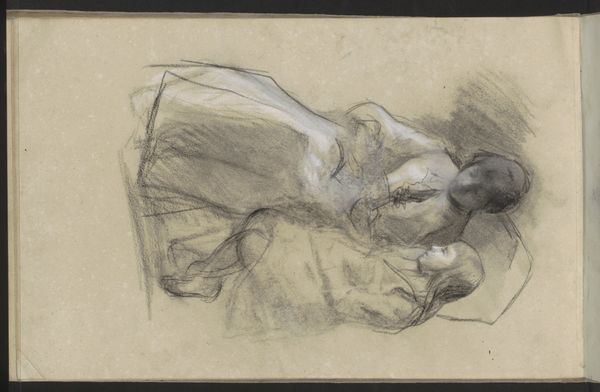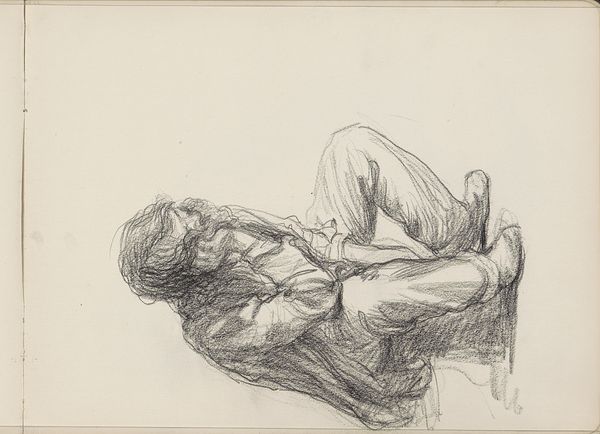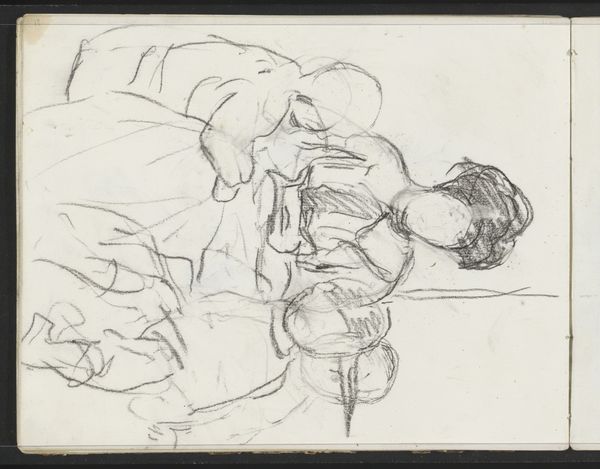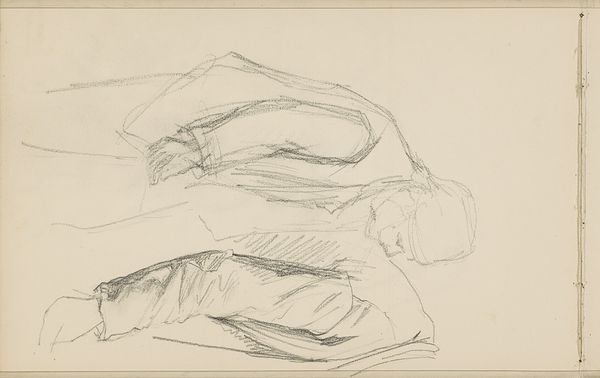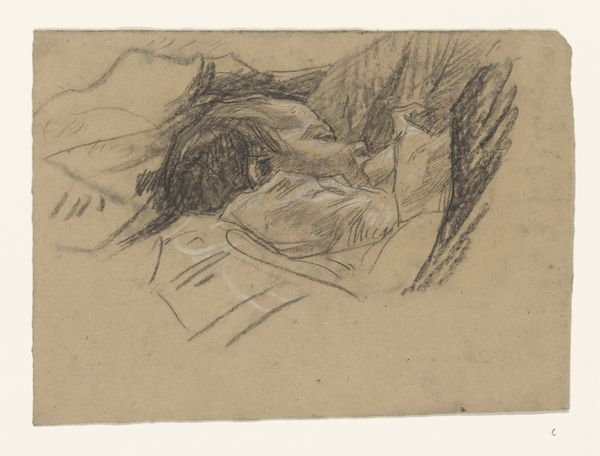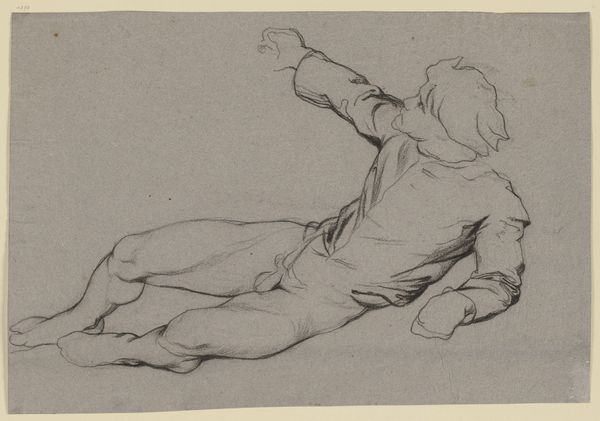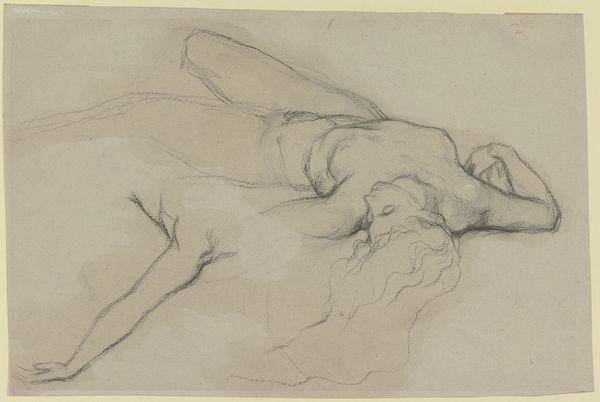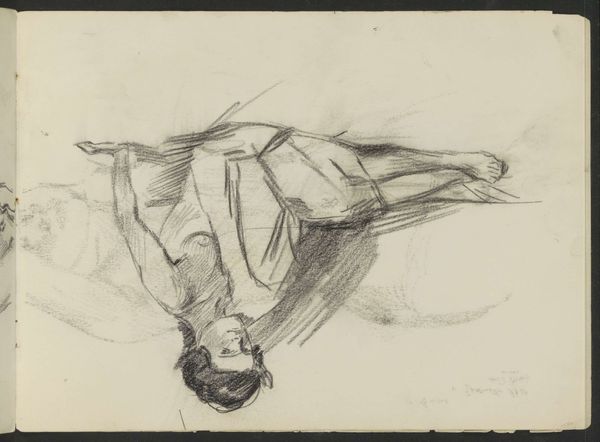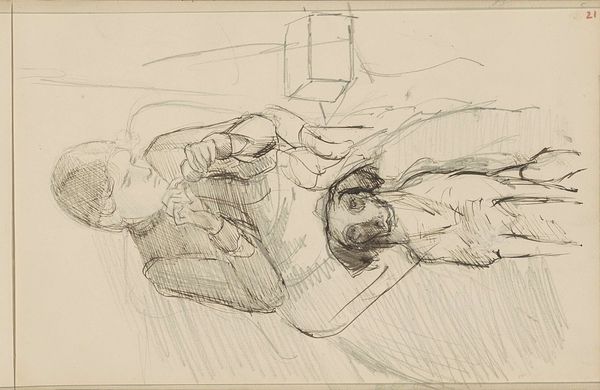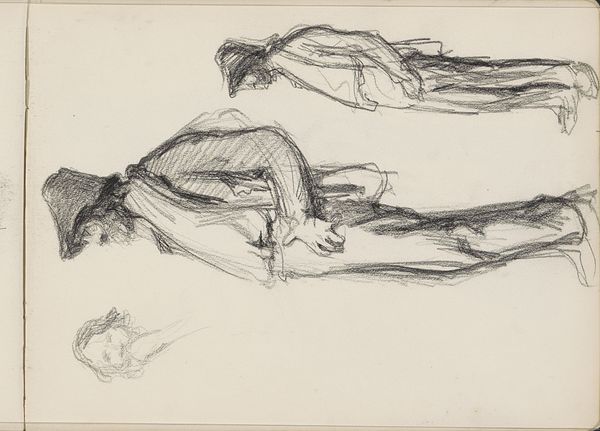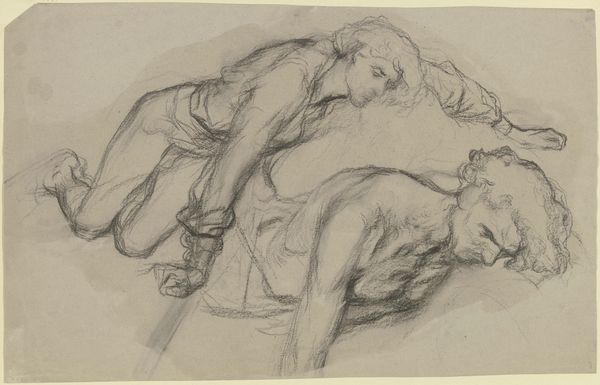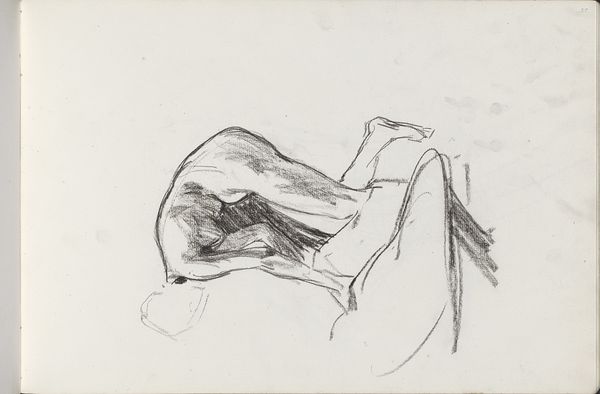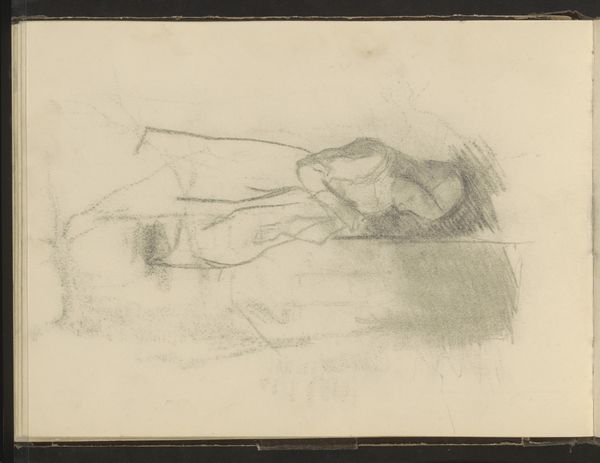
Fallen Jockey (study for "Scene from the Steeplechase: The Fallen Jockey") c. 1866
0:00
0:00
drawing, pencil, charcoal, pastel
#
drawing
#
impressionism
#
pencil sketch
#
landscape
#
charcoal drawing
#
figuration
#
pencil
#
charcoal
#
pastel
Dimensions: overall: 26.6 x 35.2 cm (10 1/2 x 13 7/8 in.)
Copyright: National Gallery of Art: CC0 1.0
Editor: So this is Degas's "Fallen Jockey," a study from around 1866, made with pencil, charcoal, and pastel. There's a real sense of vulnerability here, an exposed humanity I didn't expect from depictions of sport. What strikes you most about this piece? Curator: The fallen jockey is indeed vulnerable, but consider the broader context. Degas often depicted modern life, including the then-popular, yet exploitative, world of horse racing. The sketch’s power lies in its ability to unveil the class dynamics implicit within this entertainment: a fleeting moment of leisure premised on the pain, labour, and risks taken by working-class jockeys. What does the casualness of the drawing suggest to you about Degas's intention? Editor: That’s fascinating, I hadn’t thought about the social implications of horse racing itself. The sketch-like quality almost feels like a snapshot, an unglamorous, momentary glimpse behind the scenes… revealing this harsh reality, I suppose. Curator: Precisely. And, from a feminist perspective, consider how Degas’s gaze implicates the viewer. Are we, in our viewing, also complicit in the spectacle of another’s suffering? Is this simply a study of form and light, or a critical commentary on social inequality masked by entertainment? Editor: I see what you mean. It's not just about the beauty of the lines, it's about confronting the uncomfortable truths hidden beneath the surface of this seemingly innocuous scene. I appreciate how you connect the art to broader social justice themes. Curator: It’s essential to question whose stories are told and how, pushing ourselves to see art as a mirror reflecting our own biases and societal structures. Editor: Absolutely, this has completely changed how I view Degas and his work! Thank you! Curator: And thank you; it's through these conversations that we continue to challenge and re-evaluate our understanding of art and its role in society.
Comments
No comments
Be the first to comment and join the conversation on the ultimate creative platform.
